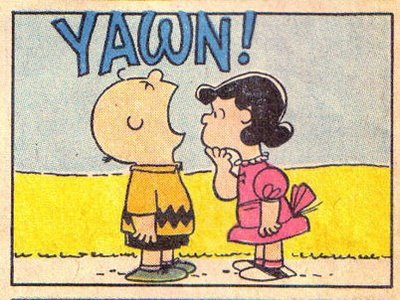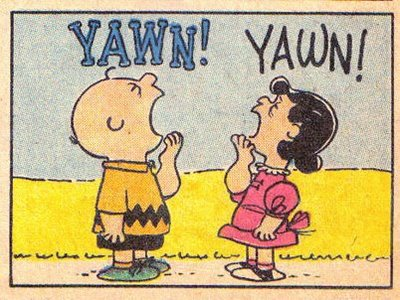20:00
Visualizing uncertainty I
Lecture 14
Duke University
STA 113 - Fall 2023
Warm-up
Announcements
- HW 4 due Thursday
- (Optional) Update your proposals by 5pm on Friday.
Peer review
Peer review
| Reviewer | Reviewee |
|---|---|
| Freedom Riders | data diggers |
| janIce | Freedom Riders |
| data diggers | janIce |
Go to the team’s repo website and read their proposal
Fill out the questions in the peer review template issue
Detailed instructions at https://sta113-f23.github.io/project/project-2.html#peer-review
Hypothesis testing
Is yawning contagious?
Do you think yawning is contagious?


Is yawning contagious?
An experiment conducted by the MythBusters tested if a person can be subconsciously influenced into yawning if another person near them yawns.
If you’re interested, you can watch the full episode at https://www.dailymotion.com/video/x7ydkt2.
Packages
Study description
In this study 50 people were randomly assigned to two groups: 34 to a group where a person near them yawned (treatment) and 16 to a control group where they didn’t see someone yawn (control).
The data are in the openintro package: yawn
Proportion of yawners
# A tibble: 4 × 4
# Groups: group [2]
group result n p_hat
<fct> <fct> <int> <dbl>
1 ctrl not yawn 12 0.75
2 ctrl yawn 4 0.25
3 trmt not yawn 24 0.706
4 trmt yawn 10 0.294- Proportion of yawners in the treatment group: \(\frac{10}{34} = 0.2941\)
- Proportion of yawners in the control group: \(\frac{4}{16} = 0.25\)
- Difference: \(0.2941 - 0.25 = 0.0441\)
- Our results match the ones calculated on the MythBusters episode.
Independence?
Based on the proportions we calculated, do you think yawning is really contagious, i.e. are seeing someone yawn and yawning dependent?
# A tibble: 4 × 4
# Groups: group [2]
group result n p_hat
<fct> <fct> <int> <dbl>
1 ctrl not yawn 12 0.75
2 ctrl yawn 4 0.25
3 trmt not yawn 24 0.706
4 trmt yawn 10 0.294Dependence, or another possible explanation?
- The observed differences might suggest that yawning is contagious, i.e. seeing someone yawn and yawning are dependent.
- But the differences are small enough that we might wonder if they might simple be due to chance.
- Perhaps if we were to repeat the experiment, we would see slightly different results.
- So we will do just that - well, somewhat - and see what happens.
- Instead of actually conducting the experiment many times, we will simulate our results.
Hypothesis testing
A hypothesis test is a statistical technique used to evaluate competing claims using data.
Null hypothesis, \(H_o\): An assumption about the population. “There is nothing going on.”
Alternative hypothesis, \(H_A\): A research question about the population. “There is something going on”.
Hypotheses are always at the population level!
Populations vs. samples
Suppose you’re cooking a pot of soup:
Taste a spoonful and decide if that spoonful has enough salt \(\rightarrow\) exploratory data analysis of the sample
Decide the pot of soup must also have enough salt since the spoonful does \(\rightarrow\) inference
Mixing the soup in the pot before taking a spoonful \(\rightarrow\) randomizing
Taking a spoonful with the intention of making an inference about the pot \(\rightarrow\) sampling
Two competing claims
Null hypothesis:
“There is nothing going on.” Yawning and seeing someone yawn are independent, yawning is not contagious, observed difference in proportions is simply due to chance.
Alternative hypothesis:
“There is something going on.” Yawning and seeing someone yawn are dependent, yawning is contagious, observed difference in proportions is not due to chance.
Hypothesis testing as a court trial
Hypotheses:
Null hypothesis, \(H_0\): Defendant is innocent
Alternative hypothesis, \(H_A\): Defendant is guilty
- Present the evidence: Collect data
- Judge the evidence: “Could these data plausibly have happened by chance if the null hypothesis were true?”
- Yes: Fail to reject \(H_0\)
- No: Reject \(H_0\)
Hypothesis testing framework
- Start with a null hypothesis, \(H_0\), that represents the status quo
- Set an alternative hypothesis, \(H_A\), that represents the research question, i.e. what we’re testing for
- Conduct a hypothesis test under the assumption that the null hypothesis is true and calculate a p-value (probability of observed or more extreme outcome given that the null hypothesis is true)
- if the test results suggest that the data do not provide convincing evidence for the alternative hypothesis, stick with the null hypothesis
- if they do, then reject the null hypothesis in favor of the alternative
Simulation by hand - setup
A regular deck of cards is comprised of 52 cards: 4 aces, 4 of numbers 2-10, 4 jacks, 4 queens, and 4 kings.
Take out two aces from the deck of cards and set them aside.
The remaining 50 playing cards to represent each participant in the study:
- 14 face cards (including the 2 aces) represent the people who yawn.
- 36 non-face cards represent the people who don’t yawn.
Simulation by hand - running
Shuffle the 50 cards at least 7 times1 to ensure that the cards counted out are from a random process.
Count out the top 16 cards and set them aside. These cards represent the people in the control group.
Out of the remaining 34 cards (treatment group) count the number of face cards (the number of people who yawned in the treatment group).
Calculate the difference in proportions of yawners (treatment - control), and plot it on the board.
Mark the difference you find on the dot plot on the board.
Simulation by computation
Go to Posit Cloud and continue the project titled ae-12-Yawners.
Recap
Types of alternative hypotheses
- One-sided (one-tailed) alternatives: The parameter is hypothesized to be less than or greater than the null value, < or >
- Two-sided (two-tailed) alternatives: The parameter is hypothesized to be not equal to the null value, \(\ne\)
- Calculated as two times the tail area beyond the observed sample statistic
- More objective, and hence more widely preferred
Average systolic blood pressure of people with Stage 1 Hypertension is 150 mm Hg. Suppose we want to use a hypothesis test to evaluate whether a new blood pressure medication has an effect on the average blood pressure of heart patients. What are the hypotheses?
Discernability level
We often use 5% as the cutoff for whether the p-value is low enough that the data are unlikely to have come from the null model. This cutoff value is called the discernability level, \(\alpha\).
If p-value < \(\alpha\), reject \(H_0\) in favor of \(H_A\): The data provide convincing evidence for the alternative hypothesis.
If p-value > \(\alpha\), fail to reject \(H_0\) in favor of \(H_A\): The data do not provide convincing evidence for the alternative hypothesis.
Statistically discernable
If you’ve taken a statistics course before, or read papers that use hypothesis testing for making a conclusion, you might have encountered the term “statistically significant” or “significance level”.
We will use the term “statistically discernable” or discernability level”, because “significant” has a different meaning in everyday language and this often causes misconceptions of what “statistically significant” means. It doesn’t necessarily mean a notable or important event has happened, it just means the data are unlikely to have come from the null model.
Setting a seed
Goal: Pin down the random generation so that the same random generation happens each time a document is rendered (by you or by someone else wanting to replicate your results)
When: Set a seed each time right before
generate()ing new resamples. Setting a seed once in a document would also work for re-rendering the document, but considering we often run the code chunk interactively, it’s best to set the seed again in each code chunk that does random generation.
